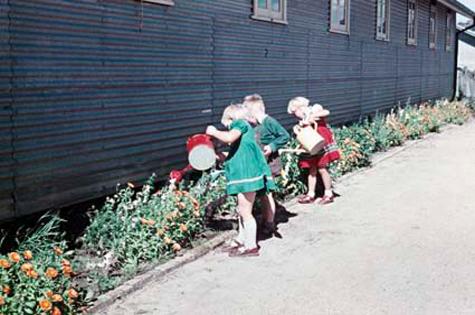A Greek girl, sent across the world to marry a man she’d never met; an African journalist fleeing for his life; and a stateless baby born in India to Iranian parents, are just some of the human stories that feature in A Ticket to Paradise? at the National Archives in Canberra.
The new exhibition, which is open from 28 November 28 until 9 March, examines the rich diversity of Australian immigrants and the government’s ambitious plans after World War II to encourage mass migration.
‘The program transformed the nation socially, economically and culturally,’ said curator Sara King. ‘It has resulted in a community where, today, one quarter of our population was born overseas, and nearly half of us have at least one parent born elsewhere.
‘While most people are aware of this aspect of our cultural heritage, many don’t realise the wealth of immigration history held by the National Archives, from personal and family stories to government campaigns and policies.
‘In A Ticket to Paradise? we’ve tried to show that the migrant experience is as diverse as the 7 million people who have arrived here from more than 200 different countries.’
The exhibition reveals the human aspect of migration, with recordings of new and archival personal stories. These stories give an insight into the rich, complex and so very different experiences of the migrants and refugees who have settled here.
The National Archives is also encouraging other post-war immigrants and their families to contribute their personal memories on iPads provided in the gallery gallery or online at www.destinationaustralia.gov.au . The exhibition also examines promotional campaigns which presented a utopian view of Australia as a welcoming country full of opportunity.
‘The government-run campaigns emphasised Australia’s climate, beaches, jobs and housing – a safe home after the atrocities of war,’ said Sara King. ‘But they also aimed to reduce fears that might arise on the home front.’
A Ticket to Paradise? is on display at the National Archives, Queen Victoria Terrace, Canberra from Friday 28 November 2014 until 9 March 2015.

















__small.png)










